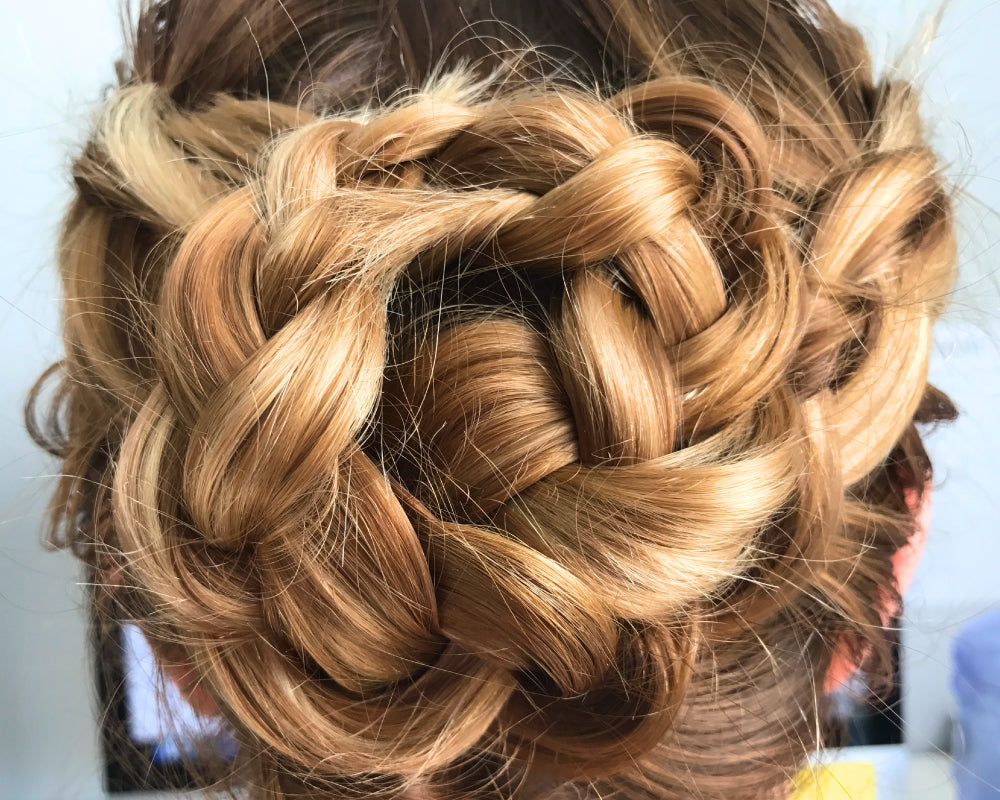
We don’t have time for super pretentious, unrelatable Hairdress-ey terms. How is one supposed to become a first-class home Hairdresser if you don’t understand half the information you’re reading? Pigment is one of those words that can fall under Hairdress-ey and makes people feel like their out of their reach when it's mentioned. Really, it’s not as scary as you may think, and once understood will be changing the way you look at Hair Colour forever.
What is Pigment? Pigment is Colour.
There are two types of Colour Pigment: Natural and Artificial.
Natural Pigment is what you are born with and is genetically predetermined.
Artificial Pigment is exactly how it sounds - Artificial Hair Colour’s that adjust your Natural Colour e.g. Permanent Hair Colour, Semi Colours. But Artificial Pigments don’t all act the same.
A Semi Colours Pigment goes over the top of your Natural Colour for a temporary Colour change. This means it can only be darker than your Natural Colour because it has no lifting ability.
A Permanent Hair Colour Pigment changes your Natural Pigment, by entering the Hair shaft and creating a new, Artificial Colour Pigment in the Hair that will stay there until it has been Colour Removed or grown out.
Bleaching removes all Natural and/or Artificial Pigments completely.
It’s also important to remember that White and Grey Hair contain no pigment.
Why does any of this matter?
Reason 1: Understanding the difference in Pigments is important to your Colour preparation, Colour choice and outcome. How you Colour bleached Hair is completely different to Grey Hair that will be different to Natural Hair.
Reason 2: To know a Permanent Hair Colour’s number, is to understand a Colour. A Colour’s number will tell you, without seeing a swatch, how Light it is, what it will look like, if it has reflects or if it’s Warm or Cool - everything.
To understand our Artificial / Permanent Hair Colour pigments, you can break it down like this:
The first number of every Colour is a Natural Colour that tells you how Light or Dark the Colour is.
Our Range includes:
1 - Black (Darkest)
3 - Dark Brown
4 - Medium Brown
5 - Light Brown
6 - Dark Blonde
7 - Medium Blonde
8 - Light Blonde
9 - Very Light Blonde
10 - Extra Light Blonde (Lightest)
The second number (e.g. 5.3, 10.2) is the primary Pigment, also know as the primary Reflect. This is the Colour Pigment that will be dominant.
E.g. 5.3 = Natural Colour is 5 Light Brown and the primary Pigment/Reflect is .3 Gold meaning it will have strong Gold Tones through the Light Brown Colour.
The third number (e.g. 7.53, 901) is the secondary Pigment/Reflect. This Colour Pigment is not as dominant but will catch the Light and give your Hair depth and dimension.
E.g. 7.53 = Natural Colour is 7 Medium Blonde with the primary Pigment/Reflect being .5 Mahogany and the secondary Pigment/Reflect being Gold meaning it has strong, dominant Mahogany Tones with subtle Gold reflects flowing through the Medium Blonde Colour.
Each Pigment/Reflect has its own number, ours include:
1 - Ash
10 - Blue
2 - Beige
20 - Violet
3 - Gold
4 - Copper
5 - Mahogany
6 - Red
If the number behind the point is the same twice, it means the Colour is Intense (e.g. 8.44 Intense Copper Blonde).
We add Pigments/Reflects to Colour’s to Warm up or Cool down the Hair. They add movement and intensity while stopping the Colour from appearing flat. See when you break the Colour number down, you can start to imagine how the Colour will look without having to see a swatch?
Now, what do you think - understanding Pigment not so tricky anymore?!







